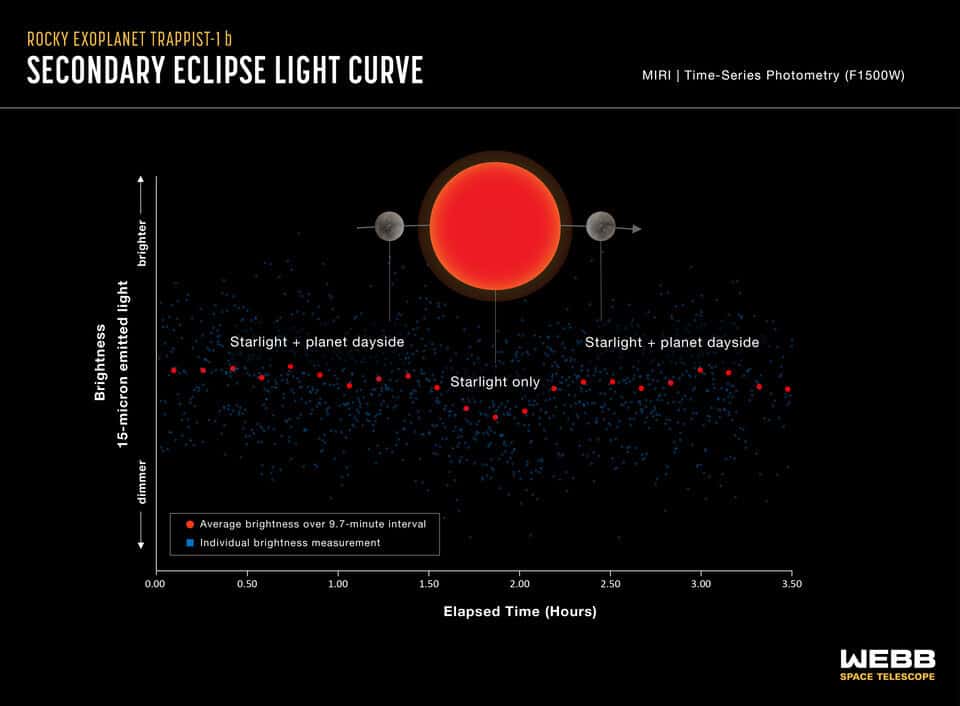For the first time, the temperature of a rocky planet was measured, as well as a planet similar to Jupiter but containing large amounts of heavy elements

1. For the first time the temperature of a rocky planet was measured. In 2017, a new solar system named Trappist-1 was discovered and it has 7 planets that are the same size as the Earth, also in terms of mass. It is believed that life can exist on them. This is a solar system that is 40 light years away from Earth. The sun is a very cold red dwarf type and the distance of its planets is less than the distance of the rocky planets in our solar system from the sun. Even so, the planets from that sun receive less energy from it than our sun gives.
The researchers put the emphasis on the planet closest to this sun and the name it received is Trappist - 1b. The reason for this was technical: it was easier to focus on him. The researchers measured the changes in its brightness when it was behind its sun. Before it has passed to the other side of its sun, most of the light reflected from it shows its "day side". By subtracting the sun's light it is possible to learn about the amount of infrared light that the planet releases. The conclusion was that the temperature on its surface is 230 degrees Celsius. This heat is not distributed on the surface like on Earth, the reason for this distribution is estimated to be that this planet has no atmosphere, but this conclusion is still not final. If it turns out that this planet does have an atmosphere, it does not contain carbon dioxide because it would absorb some of the light.
The rest of the planets of the same sun are in the Goldilocks zone as it allows for life as we know it.
מקור
Webb measures temperatures of rocky exoplanets for the first time.
Juliette Collen 27.3.2023
A heavy planet Jupiter but contains heavy elements
2. An international team using the Webb telescope revealed the composition of the atmosphere of a planet located in another solar system. The designation of this planet is HD149026b and its name is Smertrios, and it belongs to a group of planets called "Hot Jupiter" and orbits a sun similar in size to our sun. Its atmosphere has a very large amount of carbon and oxygen, far beyond what was expected for planets of this size. This planet has the same mass as Saturn, but the amount of heavy gases from helium and hydrogen is 27 times greater than their equivalents on Saturn. This ratio, called metallicity, even though it is not a question of metallic elements, is an important tool in the investigation of the planets of the suns they orbit.
A key measurement used is testing the ratio of carbon to oxygen in a planet's atmosphere, which reveals the "recipe" for the source of solids in any solar system. In the case of Smertrios it is 0.84 higher than in our solar system. In our solar system the ratio is a little more than one carbon for every two oxygen atoms (more precisely: 0.55).
While the explosiveness of carbon indicates the chances of life, a high ratio of carbon to oxygen means less water on any planet.
Smertrios is a case study for atmospheric composition in this type of research. There is an intention to check 5 more planets outside our solar system. The origin of this variation is important in understanding the formation of planets.
מקור
JWST confirms giant planet atmospheres vary widely Ithaca NY 28.3.2023
l
